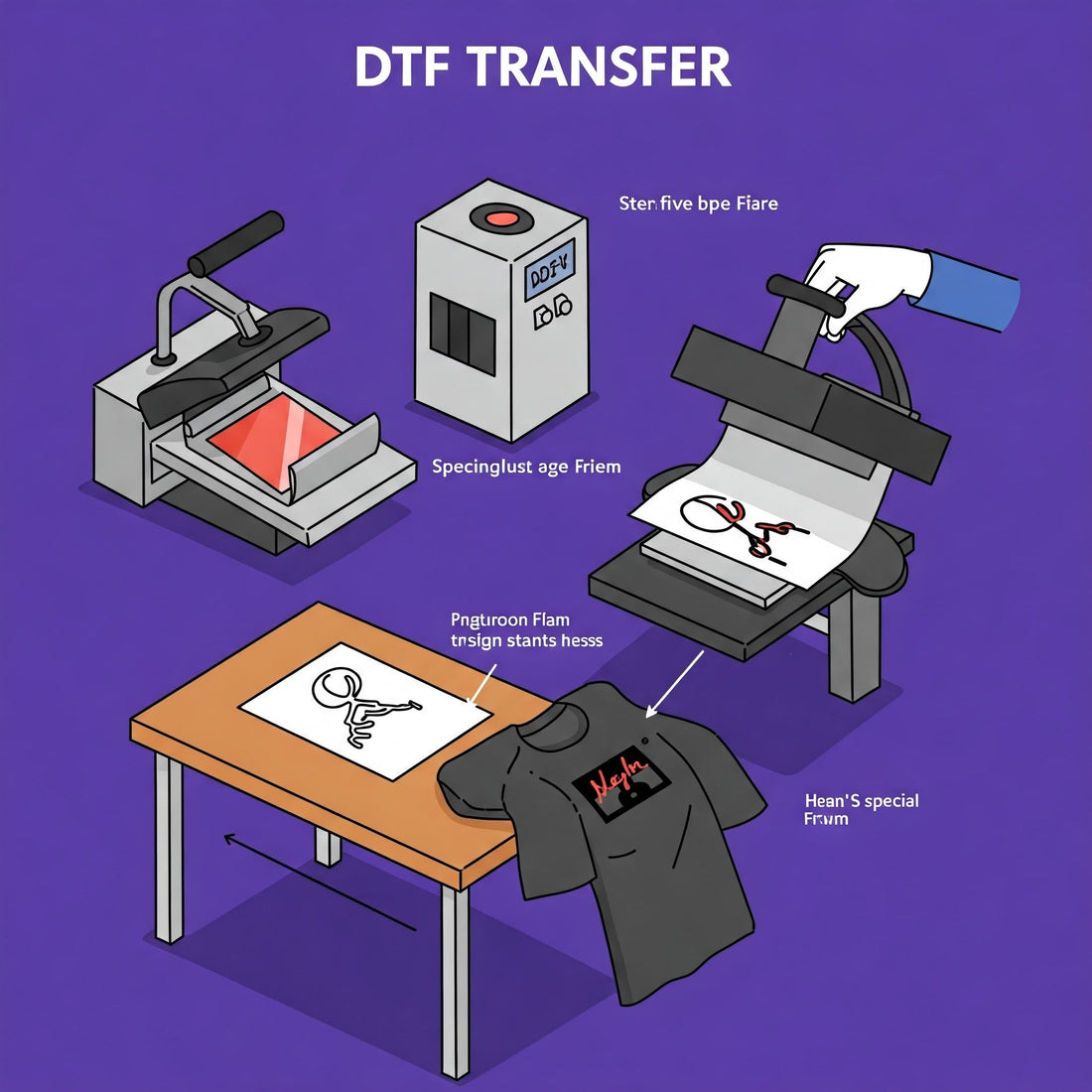What Temperature Is Best For DTF Transfers?

The optimal temperature for DTF (Direct-to-Film) transfers can depend on various factors, including the type of ink, transfer film, and the fabric being used. However, a general guideline for the heat press process commonly involves temperatures ranging from 320°F to 350°F (approximately 160°C to 177°C). It's crucial to follow the recommendations provided by the manufacturer of the DTF materials, including the ink and transfer film, to ensure the best results and adhesion. Adjustments to temperature may be necessary based on the specific requirements of your DTF printing setup.
Creating a comprehensive table for all fabric types, temperatures, and times for DTF (Direct-to-Film) printing is challenging due to the wide variety of fabrics and the specificity of printer, ink, and transfer film requirements. The settings can significantly differ based on these variables.
Here is a simplified example for a few common fabric types:
|
Fabric Type |
Temperature Range |
Time Range |
|
Cotton |
330°F - 350°F (165°C - 177°C) |
25 - 30 sec |
|
Polyester |
310°F - 330°F (154°C - 165°C) |
20 - 25 sec |
|
Blend |
320°F - 340°F (160°C - 171°C) |
22 - 27 sec |
These values are approximate, and it's crucial to consult the guidelines provided by the manufacturer of your DTF printer, ink, and transfer film for the specific settings required for your equipment and materials. Always perform test prints and adjustments to ensure optimal results.
What temperature should DTF powder be treated at?
The temperature for treating DTF powder is typically the same as the heat press temperature used for DTF transfers. Specific recommendations may vary based on the DTF printer, inks, and transfer film you are using. It is crucial to refer to the guidelines provided by the manufacturers of your DTF materials for accurate and updated information. Generally, the temperature for treating DTF powder ranges between 154°C to 177°C (310°F to 350°F). Always perform test prints and adjustments to determine the ideal settings for your specific combination of DTF equipment and materials.
For whosale custom dtf transfers, please contact us
What should be the ambient temperature?
The ambient temperature for DTF (Direct-to-Film) printing and storage can significantly impact the quality of the transfers and the materials. Generally, it's recommended to work in an environment with a temperature range of 68°F to 75°F (20°C to 24°C) for optimal results in DTF printing.
As for storage, it's advisable to keep DTF transfers and related materials in a cool, dry place. Avoid exposing them to extreme temperature fluctuations. The ideal storage temperature for DTF materials is within the range mentioned earlier, between 68°F and 75°F. This helps preserve the integrity of the transfers and ensures that they remain in good condition for future use.
What temperature is a DTF cold peel?
The concept of a "cold peel" in the context of DTF (Direct-to-Film) transfers may not be as applicable as it is in some other heat transfer methods. In traditional heat transfer processes like screen printing or hot peel transfers, a "cold peel" typically refers to waiting for the transfer to cool down before removing the backing material.
The term "cold peel" is not commonly associated with DTF (Direct-to-Film) transfers. In DTF printing, the process typically involves a hot or warm peel, where the transfer film is peeled off while it's still warm or hot after the heat press process.
It's important to refer to the instructions provided by the manufacturer of your DTF materials to ensure proper application and to understand any specific cooling or peeling steps involved in the process.
Related Page : DTF in Dallas
The washing temperature for DTF (Direct-to-Film) transfers
The washing temperature for DTF (Direct-to-Film) transfers can vary depending on the specific ink and material used. However, as a general guideline, it's recommended to wash garments with DTF transfers in cold water. Cold water is gentler on the print and helps prevent any potential damage or fading. Always refer to the care instructions provided by the manufacturer of your DTF materials for the most accurate information regarding washing temperatures and other maintenance guidelines.
Order your Gang Sheet Transfers today.
Can DTF transfers be ironed?
Yes, DTF (Direct-to-Film) transfers can be ironed. However, it's crucial to use the correct method. When ironing, turn the garment inside out and use a low heat setting to avoid damaging the design.
Picasso Print DTF!
Picasso Print DTF ürünlerinin canlı dünyasını keşfedin ve tasarımlarınızı hassasiyet ve kaliteyle yükseltin. Satın alma işleminizi gerçekleştirmek ve yaratıcı vizyonlarınızı hayata geçirmek için hemen web sitemizi(picassoprintdtf) ziyaret edin!







0 comments